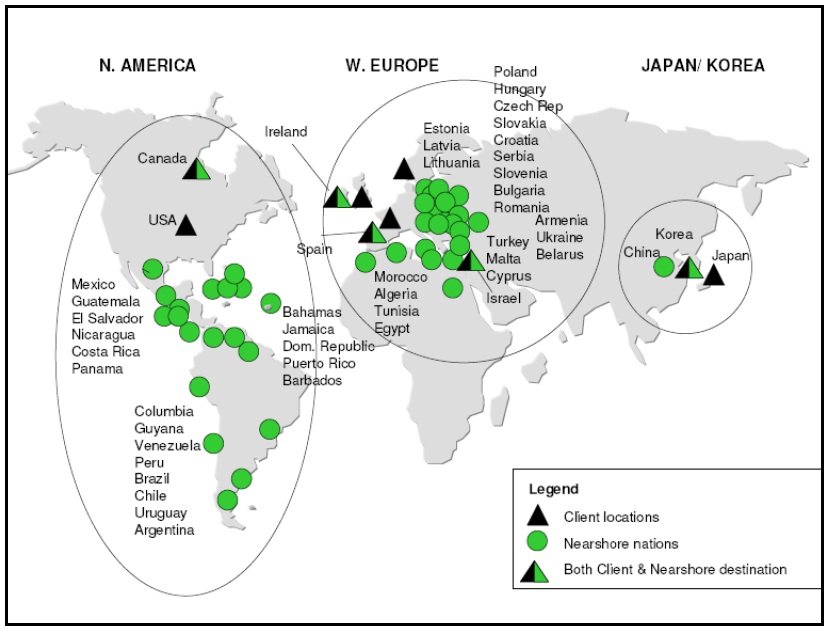A study by Carmel and Abott (2006) identified 46 nations in which nearshoring activity is occurring, these nations are clustered in three major global areas. A nearshore cluster is associated with relatively easy travel, similar time zones, and closeness in culture and/or language. As showed in the map of Figure 4, one cluster of 19 Nearshore countries surrounds the USA and Canada. Another, with 25 Nearshore countries surrounds Western Europe. The third cluster services Japan and Korea.

Figure 4 : Global Distribution of Nearshore destinations Source: (Carmel and Abott, 2006)
Some nations, such as Canada, Korea, and Ireland, can be categorized as dichotomous in the sense that they are both client locations and nearshore destinations. However, even within the three major clusters there are many subtle pairings of client-destinations (Carmel and Abott, 2006): Some Latin American countries in the US cluster lay emphasis on proximity to some regions of south USA, such as California or Florida, where Spanish speaking populations are considerable. In 2005, there has even been a proposal to lease a cruise-ship that would be a nearshore programming centre to Los Angeles (Schaffhauser, 2005).
While in European cluster, a study by At Kearny (2003) about offshoring strategies of European financial service providers, confirms the appeal of Europe nearshore locations in contrast to the conventional offshore destination India. In fact, French-speaking Northern African nations are considered nearshore destinations for France. English-speaking Malta is a British provider. German firms nearshore about 60% of their work to Eastern Europe (The Economist, 2006). Spanish companies outsource to Moroccan Spanish speaking regions. And Finnish firms nearshore to linguistically-proximate Estonia.
Finally, in the Asian cluster, the Japanese firms outsource their IT work to the nearshore region of Dalian in northeast China.
As a result, the top Indian firms, who became conscious that nearshoring destinations represent one of the competitive threats, have been expanding their global presence for some years into nearshore locations. Some of these Indian firms now offer a locational menu of choices to their clients and have even assimilated some of the nearshoring discourse (Carmel and Abott, 2006). For example, India’s HCL employs 2,350 (and rising) in Belfast to run backoffice activities for EU clients.
